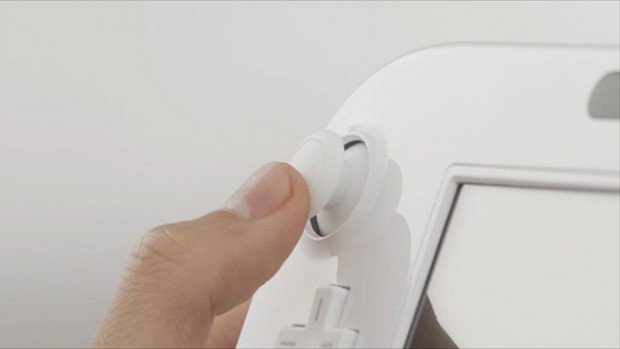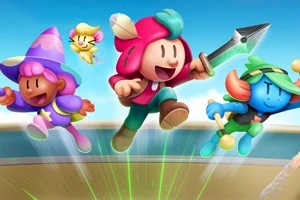Quality Control: Controlling Wii U

Posted 04 Jun 2012 at 11:20 by Mark Lee
Quality Control: Controlling Wii U
If you watched yesterday's Nintendo event you'll no doubt be as excited as we are to find out even more information over the next few days. The social functionality of Wii U is going to be a large focus of Wii U so controlling the eco-system will be vital in ensuring gamers all over the world can integrate fully with their fellow players. How each developer maps their games into this system looks streamlined enough but time will tell if the traditional gamer (who Nintendo are actively courting here) will feel at ease talking about their kill-streaks in the Miiverse.
What offers further exploration from a gaming perspective was the unveil of yet another controller for the Wii U. Never a developer to shun control methods, what is surprising is that Nintendo's Wii U now offers THREE methods of input via existing Wii Remotes, the Wii U GamePad and the new Wii U Pro Controller. It would be foolish to instantly say Nintendo will confuse gamers, developers and thus the market from this unveil, but the control methodology of Wii U certainly throws up a lot of questions.
 Wii U Pro Controller:
Wii U Pro Controller:
Our initial concern with this controller doesn't lie in design but with the integration of the system's ethos. The Wii U Pro Controller WILL take away the ease of use of the Wii U system as, with no screen, the accessibility of the Miiverse and wider functions of the operating system will be diminished. Anyone who has tried to navigate websites or write messages to other players on their 360 or PS3 controllers can testify that it can be a laborious process. Navigating menu's with the Wii U Pro Controller may be fine (like using a Classic Controller on Wii's Menu's) but inputting text/drawing - a core function from what we've seen, may be something many gamers do on the Wii U GamePad instead.
In-game though, I expect the Wii U Pro Controller to be widely adopted by those on the fence as it mimics the setup of what could be considered the 'best' controller available for core gamers. What is interesting though is the placement of the analogue control sticks which mirror the Wii U GamePad setup, inidicating a control design that demands intensive control, something that existing 'core' games rely so heavily on when playing certain genres.
The Wii U Pro Controller should do very well indeed, appearing to be recognisable, rechargeable and retro enough to entice existing core gamers (and developers) who may have been put off by the forced screen on the Wii U GamePad.
 Wii U GamePad:
Wii U GamePad:
The Wii U GamePad represents Nintendo's original vision for the system and one which belies Nintendo's previous foray into simplified motion control (more on that below). The positives of using this controller mirror what we've seen before when we first saw the NES, SNES, N64 controllers - namely that it offers more control, more possibility and thus more ways to play. If Nintendo want to keep their gaming franchises fresh, they have to keep on moving the goalposts in relation to what's possible in their games.
Ironically, as 'core' players continue to disregard Nintendo's commitment to technology, their controllers have always been at the forefront of innovation and technology. The Wii U GamePad hammers that home like never before. Motion control, touch screen, near field communication, camera... it's like the swiss army knife of control. Make no mistake, the Wii U GamePad is the most flexible gaming controller ever.
So how does that enable everyone to play together nicely?
We know that the controller will be used to control a lot of the system's functions - one that encourages Wii U GamePad usage, yet with tradtional games questions arise. Many developers have already spoken about innovative ways of using the Wii U GamePad and we will soon find out how Nintendo plan to tap into the possibilities it presents. So from a gamer's perspective it should be exciting to experience new experiences. Will the Wii U GamePad present more intimate and social experiences? It appers it could - yet it is up to the developers to hammer home the positives of using the Wii U GamePad.
What also remains unanswered is the possibility of multiple Wii U GamePad usage on one system and how/if the playing field will be equal when one gamer has the controller and another player has an alternative (screen-less) setup.Herein lies the biggest bug-bear for many gamers. However, I would like to point out that when players are engaged in multiplayer sessions, there is usually someone (traditionally player 1) in charge of menu selection etc. If the Wii U GamePad is cemented in this manner and doesn't handicap other players, I think it will be a controller embraced by traditional gamers.
Traditional Wii Control:
Finally, what will Nintendo do with all that motion experience garnered from their Wii software?
I believe most of their social games will use both the Wii U GamePad and the Wii Remotes - as seen at last year's E3. The Wii Remotes will function superbly for Menu interaction (through the existing pointer method) and for casual gamers, Nintendo (and others) will continue to produce motion/IR games. With Motion Plus embedded in Wii Remotes it will be interesting to see where motion gaming goes and if any developer releases titles which cater to this added precision - current Wii Motion Plus titles suggest not.
Motion and IR control can still be leveraged in shooting games, sports games and puzzle games so we hope that developers continue to offer this setup as a real alternative. Looking at Kinect, it seems that casual gamers still enjoy motion-based gaming, so we'd love to see the Wii heritage strengthened through improved graphics and Motion Plus.
Developers: It's over to you.
What do you think about the range of control offered by Nintendo? Will Wii U confuse or delight? Comment below and let us know!






















